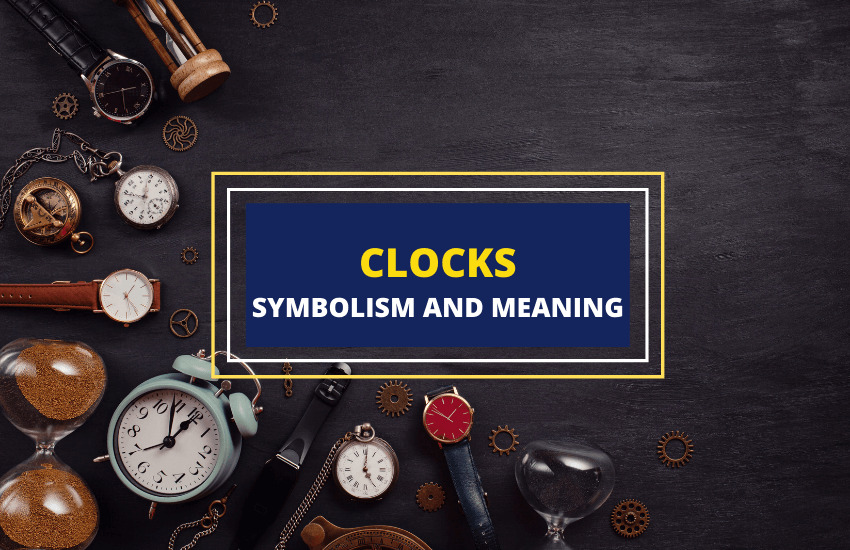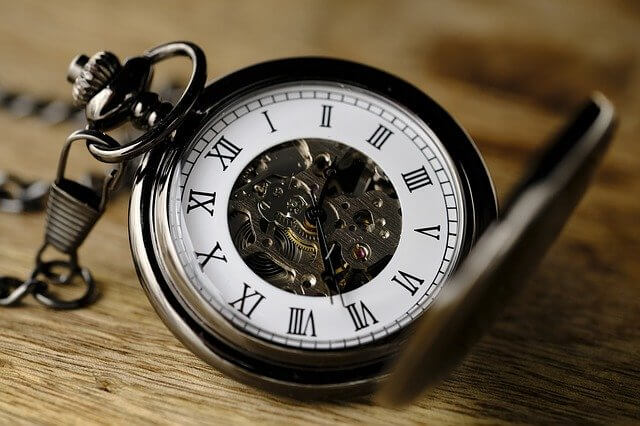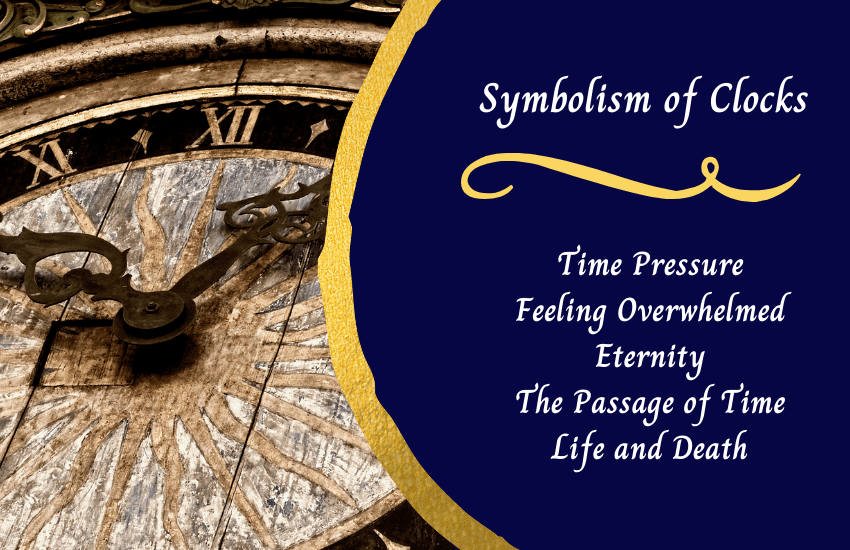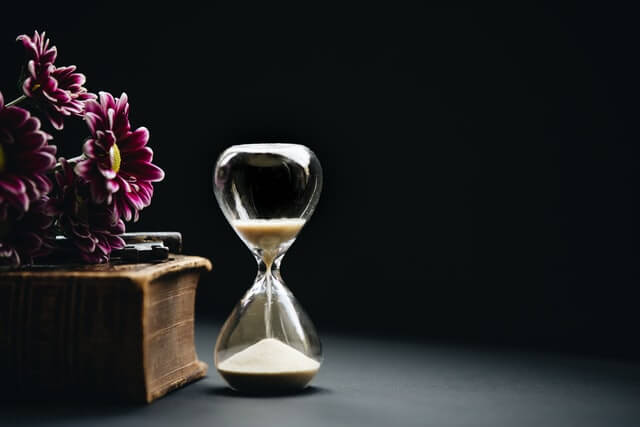
Table of Contents
The measurement of time originated back in ancient Egypt, around 1500 B.C. The Egyptians understood the concept of time and recognized the importance of measuring it. It was this knowledge combined with the need to measure time which instigated the invention of different timepieces over the years and ultimately to the clock as we know it today.
In the modern world, clocks are simple devices which play an important role in our daily lives. However, not many are aware of their symbolism. In this article, we’ll be taking a close look at the history of clocks and their symbolism.
What Are Clocks?

Designed to measure, record, and indicate time, the clock is one of the oldest instruments invented by humans. Before the invention of the clock, people used sundials, hourglasses, and water clocks. Today, a clock refers to any type of device that’s used to measure and display time.
Clocks are not usually carried around but placed in a location where they can be seen easily, such as on a table or mounted on a wall. Watches, unlike clocks, are timepieces that share the same basic concept of a clock but are carried on one’s person.
Clocks keep time using a physical object known as a harmonic oscillator which vibrates at a specific frequency to produce microwaves. The first clock that was created using this mechanism was the pendulum clock, designed and built by Christiaan Huygens in 1956.
Since then, there have been various types of clocks created, each model more advanced than the one before. Some of the most used types include the following:
- Analog Clock – This is the traditional clock that shows time on its face using fixed numbered dials, the hour hand, minute hand, and second hand, placed in a circle.
- Digital Clocks –These are precise and reliable timepieces that use numeric displays to tell time. The display formats include a 24-hour notation (00:00 to 23:00) and a 12-hour notation, where the numbers are shown from 1 to 12 with an AM/PM indicator.
- Speaking Clocks –These use a recording of a computer or a human voice to tell the time out loud. Speaking clocks are designed for visually impaired individuals and are used in alternation with tactile clocks whose display can be read by touch.
What Do Clocks Symbolize?
As instruments of time, clocks have various symbolism based on the same theme. Here’s a look at the symbolism and meaning behind the clock.
- Time Pressure – Clocks can symbolize feelings of time pressure. They can also serve as a reminder that time should be used wisely as it is a limited resource.
- Feeling Overwhelmed – A clock can also signify emotional overwhelm caused by something in one’s life, perhaps a tight schedule or a deadline that needs to be met.
- Passage of Time – Clocks are also thought to represent the passage of time, which moves forward relentlessly, and once gone can never be recovered. They can be viewed as a sign that each minute is precious, and that it’s important to live every minute of one’s life to the fullest.
- Life and Death – Clocks are considered to be a symbol of life and death. They’re a clear sign that nothing remains permanent in life and that everything changes at some point or other.

The Symbolism of Clock Tattoos
Many tattoo enthusiasts choose clock tattoos to symbolize an aspect of their life, or to express their personality and desires. While the general meaning of clocks still apply in this case, there are also specific meanings attached to particular tattoo designs. Here are a few examples:
- Melting Clock Design – Made famous by Salvador Dali’s paintings, the melting clock is a representation of passing time. It can also represent a loss and waste of time, or the inability of humans to control time.
- Grandfather Clock Tattoo – This vintage tattoo design is usually chosen to symbolize nostalgia for time or events that have passed.
- Prison Clock Design – A prison clock tattoo is drawn as a broken clock with no hands. It signifies the confinement that the wearer is subjected to. A person may choose this tattoo design to express feeling like a prisoner in a certain situation. It can also represent being stuck in a certain time in the past, or holding onto the past.
- Sundial Design – A sundial tattoo design is an indication of ancient wisdom, symbolism stemming from the fact that the sundial was a clever and innovative invention of great use to ancient civilizations.
- Clock and Rose Tatoo – A clock depicted together with a rose is a symbol of everlasting love, representing eternity. This comes from the the representation of the rose as a symbol of love and that of the clock as a symbol of time.
- Cuckoo Clock – These clocks are most often featured in popular culture and represent innocence, old age, childhood, the past, and fun.
A Brief History of Clocks

Before the invention of the first clock, ancient civilizations observed nature and used deductive reasoning to tell time. The earliest method involved using the moon as a time-keeper. Observing the moon taught them how to measure hours, days, and months.
A full moon cycle meant that a month had gone by, while the appearance and disappearance of the moon meant that a day had passed. Hours of the day were measured as estimates using the position of the moon in the sky. Months were also measured using the seasons of year for planning festivities and for migratory purposes.
Over time, however, humans became more curious about the passage of time and began to come up with simple inventions to measure it. Their inventions include the following:
- The Merkhet – Used in Egypt around 600 BC, merkhets were used to tell time at night. This simple device featured a straight bar connected to a plumb line. Two merkhets were used together, one aligned with the north star, and the other to establish a longitudinal line known as a meridian that ran from north to south. The meridian was used as a reference point to track the movement of certain stars as they crossed the line.
- The Sundial or Oblique– This device was used in Egyptian, Roman, and Sumerian cultures over 5,500 years ago. Powered by sunlight, the sundial indicates the time on the movement of the sun across the sky. However, sundials could only be used in the daytime, so it became necessary to devise a different way of measuring the time that could work at night or on cloudy days when the sun was hidden.
- The Water Clock – The earliest designs of water clocks can be traced back to the Egyptian and Mesopotamian cultures. Water clocks measure time by using the inflow or outflow of water. The outflow water clock design involved a container filled with water. The water would drain evenly and slowly out of the container. Inflow water clocks were used in the same way, but with the water filling into a marked container.
- The Candle Clock – First used in ancient China, the candle clock began with the burning of a marked candle. The time was measured by how much wax had burned and by observing which markings had melted off. This method was highly accurate since the rate of burning is nearly constant. However, when blowing wind moved the flame, the candle burned faster so it had to be placed in a location where it would be protected from the wind.
- The Hourglass – Believed to have been created by a monk in 8th century France, the hourglass featured two glass globes, one filled with sand and the other one empty. The globes were connected by a narrow neck through which sand would gradually trickle from top to bottom. Once the bottom globe was full, the hourglass would be turned upside down to repeat the process.
By the 13th century, these time-keeping methods had spread across the world but there was still a need for a more dependable method. This need gave rise to the creation of the mechanical clock.
The earliest mechanical clocks worked using one of two mechanisms. One involved gears that were controlled using water pressure, while the other was the Verge and Foliot mechanism.
The latter had a bar called the Foliot with verges on both ends weighted with pebbles that enable a back and forth movement to control the gear. These clocks were also fitted with bells which rang at specific times. Religious movements and monasteries used clocks with bells to alert the devotees about the hours set for prayer.
Although these early mechanical clocks were a definite improvement from the primitive devices, their accuracy was questionable. It was Huygens who solved this problem with his invention of the pendulum clock. After several improvements were made to the pendulum clock , the Shortt-Synchronome clock, an electromechanical device, was created. This led to the invention of the quartz clock that’s in use today.
Wrapping Up
As a symbol of time and its passage, the clock continues to be a reminder of the limited amount of time living beings have on earth. As the clock moves, so does life. It’s not possible to reset time by turning back the hands of the clock, so it is important to recognize its value and make the most of every precious minute.







